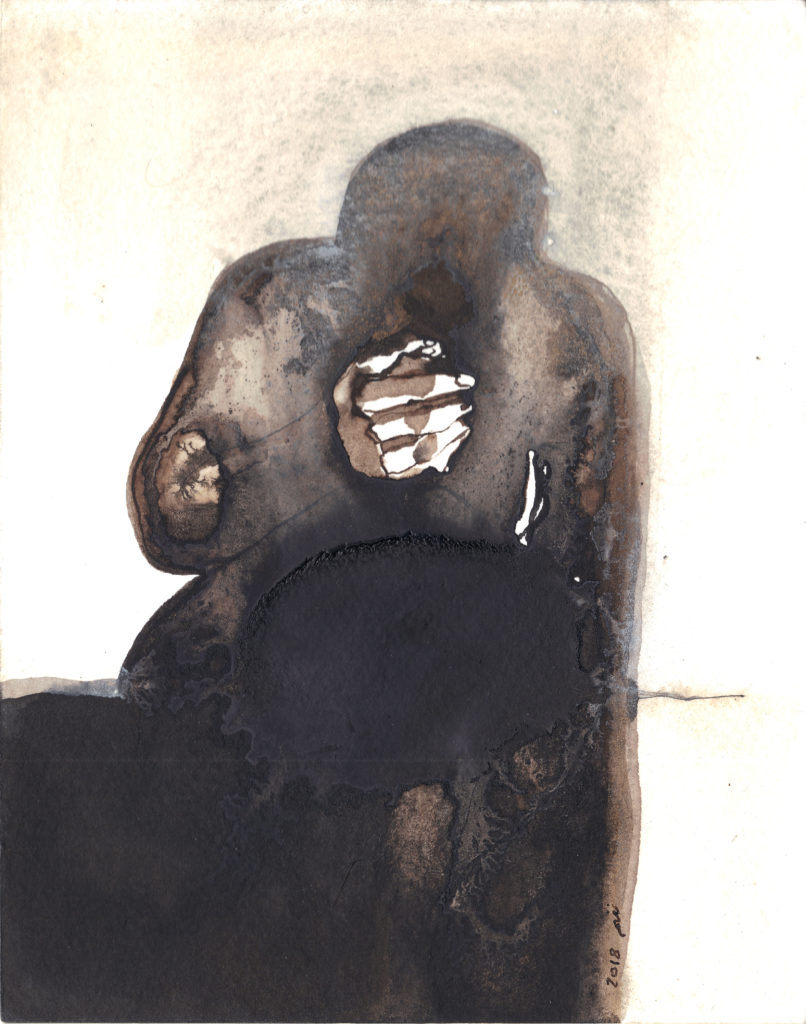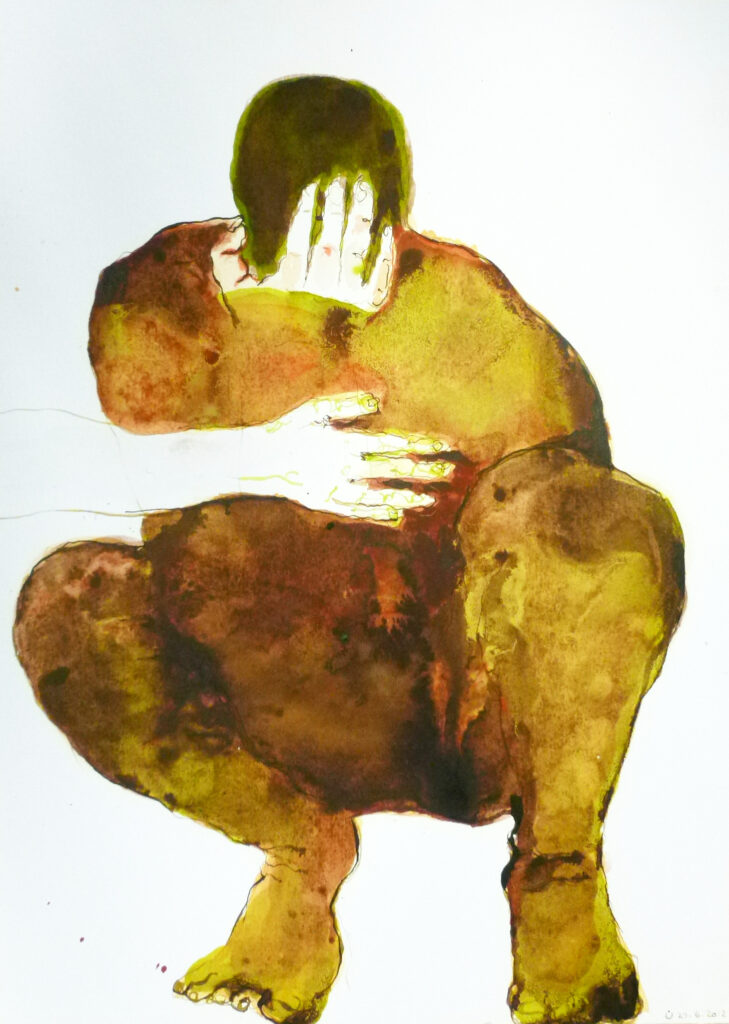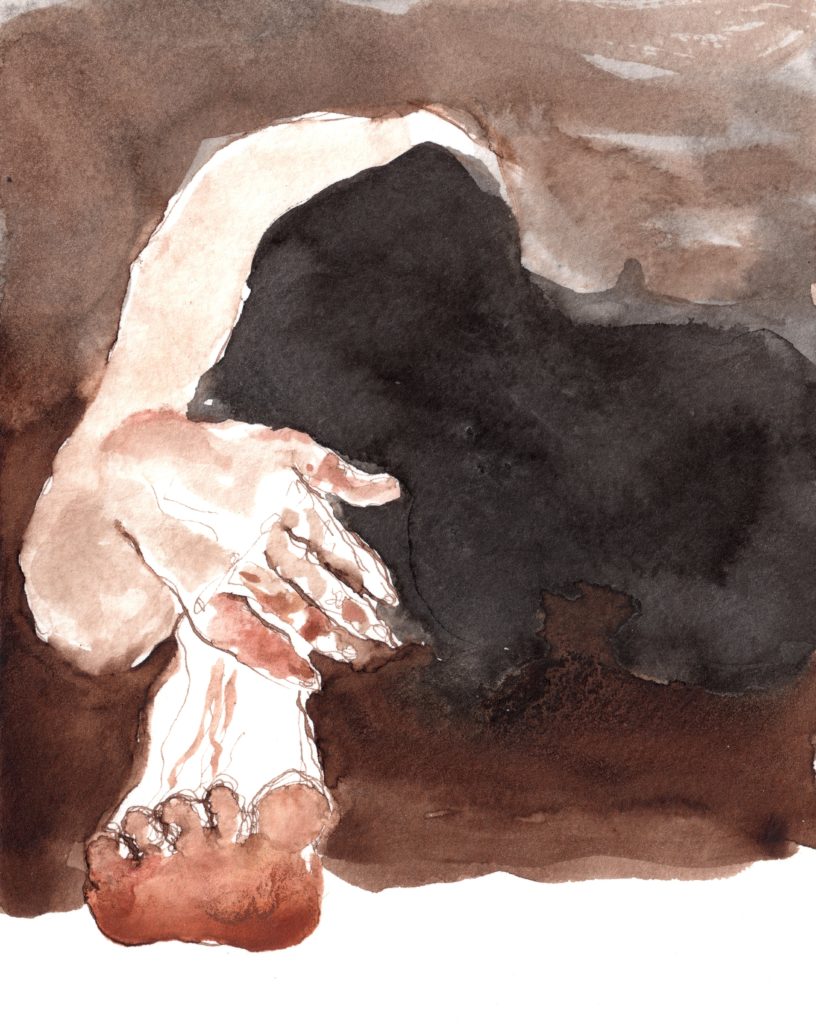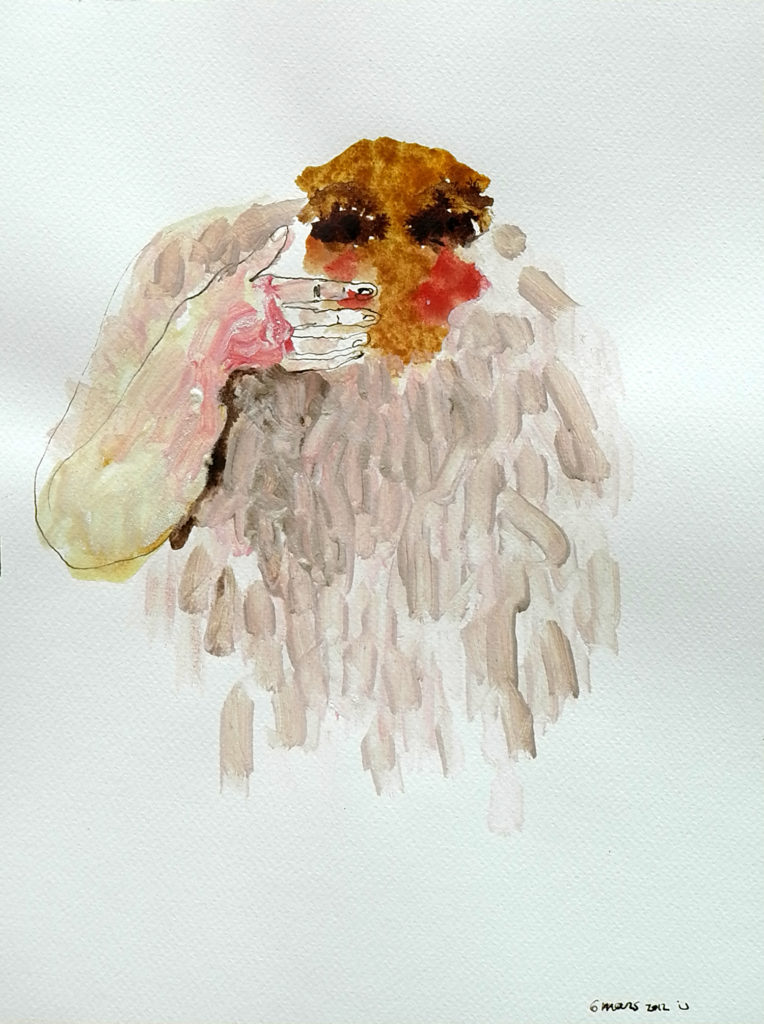Maskes-Faces-Heads
Questioning the face is inevitable in artistic representation. The hand spontaneously traces or is drawn to two eyes, a nose and a mouth. The existence of the face in art covers everything else, becomes the threshold, the starting point of the gaze, the encounter and the unveiling. However, hiding or painting « portraits without faces » can be interpreted in relation to the news, expressing the loss claimed by artists who have experienced the violence and trauma of wars.
Experiencing deadly events from afar via social networks, then refusing to keep on witnessing the absurdity of such conflicts where identity and humanity vanish. What to paint? What is the purpose? And why? The hand, so important, our tireless companion, the working hand, the one that builds and destroys, and the one that can also save: the hand reaching out.



FR
Le questionnement du visage est inéluctable dans la représentation artistique. Spontanément la main trace ou part à la rencontre de : deux yeux, un nez et une bouche. L’existence du visage dans l’œuvre recouvre le reste, devient le seuil, le point de départ du regard, de la rencontre et de la mise à nu. Or, masquer, ou autrement dit, les « Portraits sans visages » peut être interprété en rapport avec les actualités, et cela rejoint le lien avec la perte, revendiqué chez des artistes qui ont vécu les guerres.
Vivre les événements meurtriers, de loin ou via les réseaux sociaux, ensuite refuser de recevoir ainsi l’absurdité des conflits où l’identité et l’humanité se perdent. Que peindre ? Quel sens ? Et pourquoi ? La main, si importante, compagne inlassable, œuvrante, celle qui construit et détruit, et qui peut sauver aussi : la main se tend.
